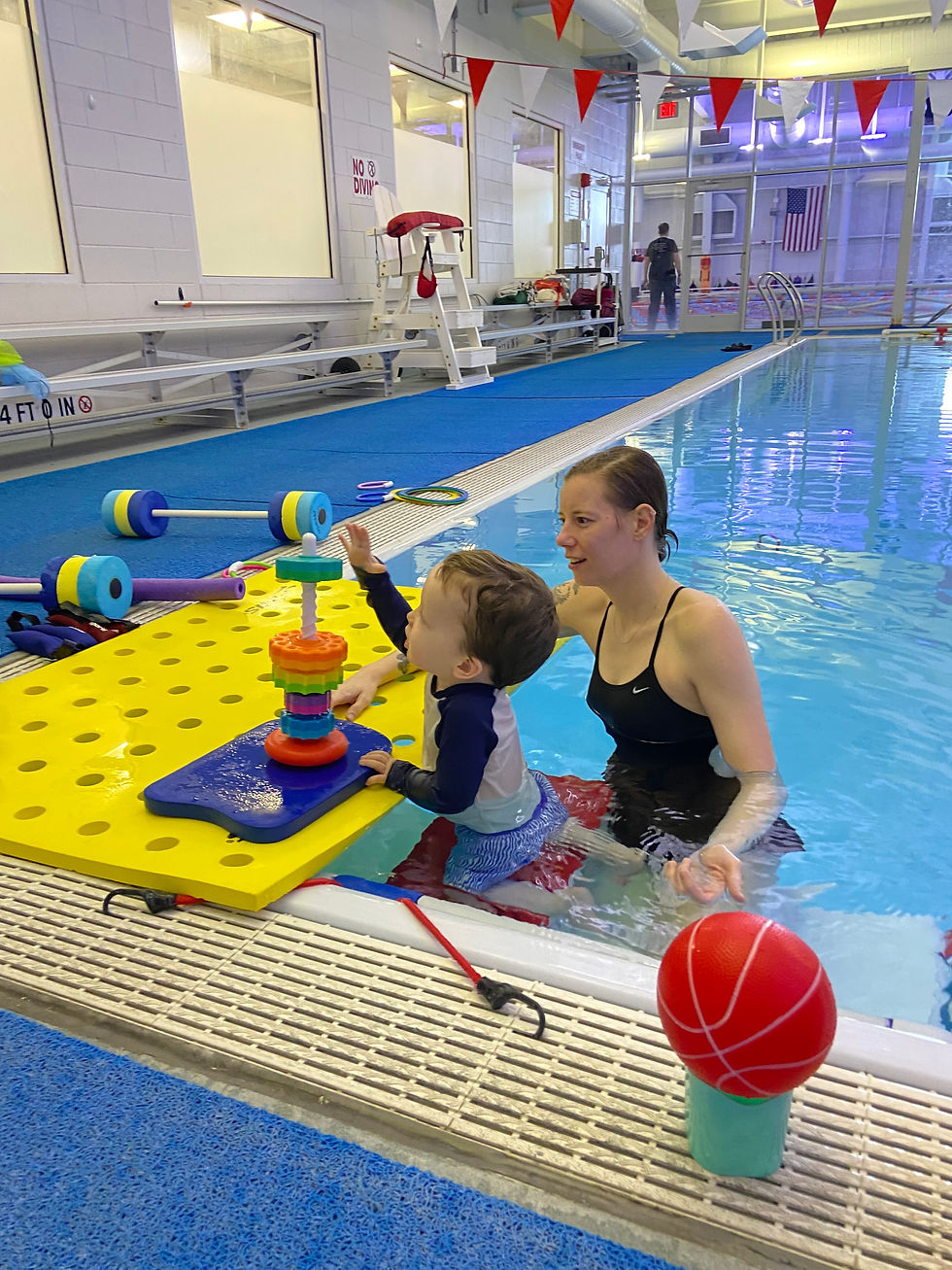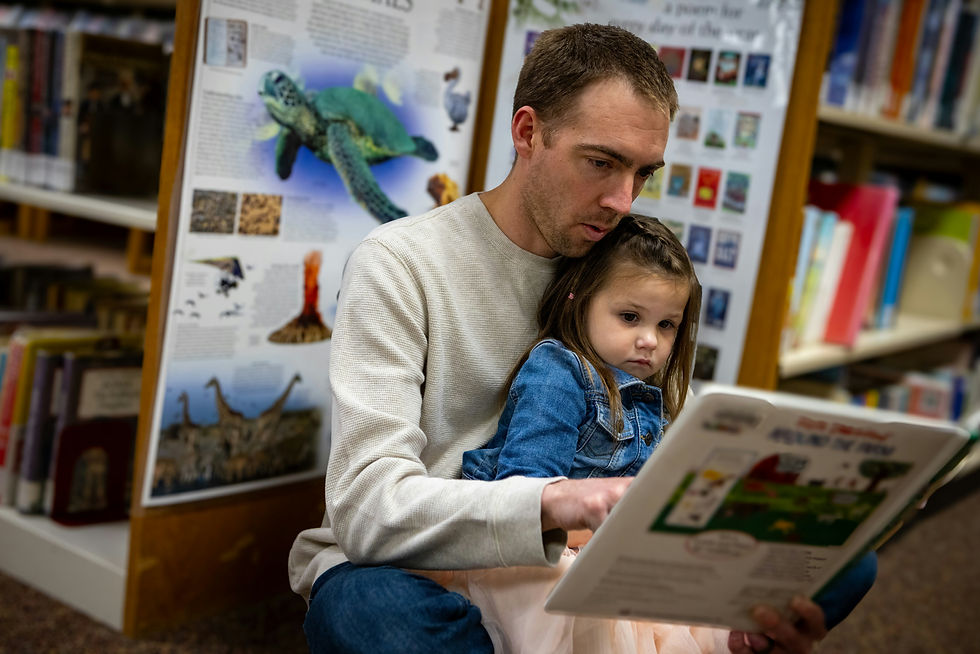Gestalt Language Processing
- Boston Ability Center
- Oct 3, 2023
- 5 min read
Megan Romanczyk, M.S. CCC-SLP

What is Gestalt Language Processing?
Did you know that there is more than one way to process language? More likely than not, what you’ve learned about language development aligns with analytic language processing (ALP). For individuals who process language analytically, language development progresses through a predictable set of stages: one word, two words, phrases, and sentences. If your child developed language analytically, maybe their first word was ‘mama’. About a year later, they may have communicated ‘mama, help.’ This may have progressed to ‘mama, help me.’ Analytic language processors understand that each individual word carries meaning, and as their vocabulary grows, they learn to combine words into longer phrases and sentences to communicate in limitless ways.
However, this is not the only way to process language. Some children are gestalt language processors (GLP). Rather than attuning to individual words, gestalt language processors are attuned to larger chunks of language, or gestalts, to represent the same meaning. While gestalt language processing is very common, particularly among the autistic community, it has only recently become the focus of communication intervention, assessment, and research.
I remember working with a gestalt language processor in graduate school (although, at the time, I didn’t know what gestalt language processing was). During an initial evaluation, this young boy repeated the phrase “It’s too spicy! It’s too spicy!” while I was administered standardized language assessments. His mother, instead of dismissing this out-of-context language, knew exactly what he was talking about and validated his communication. She shared that years ago, he had tried a new food that had peppers in it. He became immediately upset, and his mother took away the plate saying “It’s too spicy!” This child processed that chunk of language, “it’s too spicy,” to represent what he was trying to communicate at that moment: “No! I don’t like this! Take this away!” Given this context, it made perfect sense to me why he was saying, “It’s too spicy!” He was communicating that he didn’t want to complete the testing, and he was communicating with language that he had acquired to express that concept.
It wasn’t until years later that I first learned the term gestalt language processing.Gestalt language processing was first named and defined by Ann Peters in 1983 based on qualitative research. It was further studied by Dr. Barry Prizant and later discussed Natural Language Acquisition on the Autism Spectrum by Marg Blanc. Although the research has existed for decades, it has only recently entered clinical spaces with the emergence of clinical coursework (see below for more information).
At the BAC, our clinicians have spent the past few years taking courses, listening to podcasts, and researching gestalt language processing to determine how to best assess and provide therapy to gestalt language processors. We’re here to give you a review of what we’ve learned.
In contrast to analytic language processors, who learn words as individual units, gestalt language processors acquire larger chunks of language, or gestalts, to represent the same meaning. This natural language acquisition process moves through 4 initial phases of language development:
1) Whole gestalt or script (e.g., To infinity and beyond)
2) Mitigated gestalt (e.g., To the kitchen)
3) Single words and recombination (e.g., kitchen)
4) Self-generated utterance (e.g., go to kitchen)
Gestalt language processors are attuned to meaningful, often emotional chunks of language with rich intonation. This is why children will often use gestalts from beloved books, movies, and clips. These gestalts may sound like 'gibberish' as a child may be attempting to express a phrase or sentence that surpasses their ability to articulate each word accurately. Typically, these phrases will still maintain the intonational pattern of the source material.
How Does Speech Therapy Differ for a Gestalt Language Processor?
Gestalt Language Processors benefit from therapy following the Natural Language Acquisition Model. The process follows the phases of gestalt language development:
1) Support the child's acquisition of developmentally appropriate and meaningful gestalts to communicate a wide variety of pragmatic functions, or communication intentions (i.e., Let's go play, Wanna get more, That's not working, I don't want to, Need some help etc.)
2) Model mitigations to support the child's ability to break down whole gestalts to alter their meaning (e.g., Let's go play/Let's go outside/Let's go do it; Wanna get more/Wanna get blocks/Wanna get going; That's not working/That's not right/That's not the cookie; I don't want to/I don't like it/I don't have it; Need some help/Need some more/Need some water etc.)
3) Model single words and 2-word combinations rich in nouns and adjectives to support the further breaking down of gestalt mitigations into individual units of meaning (block, more block, car, fast car). Many children will move through this stage quickly, but research demonstrates modeling at this level is key to support a child's ability to comprehend and use words as individual units, subsequently re-combining those words into self-generated phrases and sentences.
4) Model 2-3 word combinations to support the child's self-generation of sentences. The initial goal at this stage is to support the child's ability to combine words in flexible ways to independently communicate a variety of communication intentions.
After completing this progression, children will begin working on developing grammar. At this point, speech therapy can begin to address vocabulary, syntax, morphology, receptive language, and social communication.
How Do I Know if My Child is a Gestalt Language Processor?
Listen for:
Immediate or delayed echolalia
Lines from books, movies, games, videos, or previous conversations to communicate
Phrases or sentences that seem out of context with rich intonation or sing-song voice
Repetition of questions instead of answering questions. (e.g., The child says “play outside” instead of “yes” when asked “Do you want to play outside?”)
Pronoun reversal (e.g., The child says “You put on your shoes” instead of “I’m putting on my shoes”)
“Jargon,” or long strings of unintelligible words with intonation (this is also typical for analytic language processors in early development)
How Can Families and Friends Support Gestalt Language Processors?
Gestalt language processors, in the initial stages of development, are processing language differently than their analytic language processing peers. We can support their language development using the following tips:
Be a detective: If your child uses a gestalt often, try to determine where that gestalt came from (caregiver, book, movie, YouTube video, teacher etc.) Once you know the source, it may be easier to decipher the meaning.
Know that gestalts can’t be taken literally: Focus on the communication intention, rather than the literal words.
Keep a communication log: Keep track of your child’s gestalts, where they came from, and what they mean. This will be helpful in determining how to support their language development in collaboration with your SLP.
Acknowledge what you hear: If you don’t know what your child is trying to say, you can validate their communication attempt by repeating back what you heard or saying something like “I hear you” or “I’m listening.”
Limit your questions: Many gestalt language processors in the early stages of development have difficulty understanding and answering questions. Try to replace questions with declarative language. For example, instead of saying “Do you want to go to the gym?” you can say “Let’s go to the gym.” You can still offer your child choices using declarative language (e.g., “I wonder what we’ll do today. Let’s play inside or let’s play outside.”)
If your child uses an AAC device, talk to your SLP about how to best customize the device to include gestalts. Depending on the device, you may even be able to link to the original audio or video of a gestalt.
If you want to learn more about gestalt language processing, our SLPs are here to help! Give us a call at 781-239-0100 and check out these websites and blogs to learn more:




Comments